The first criteria is how much voltage the diodes need to block. Above a certain voltage (the breakdown voltage) the diode will conduct large current in the reverse direction (destroying itself and probably another diode that is conducting in the forward direction (by overcurrent since the two will be in series across the mains).
Since the peak voltage on a 220V RMS mains is \$220\sqrt 2\$ = 311V and the 1N4007 is rated at 1kV PIV (Peak inverse voltage) that would seem to be plenty of margin.
You should also consider transients from other things that may be connected to the mains- for example if you had a motor and opened the connection to the motor and bridge, the inductive energy in the motor would cause a voltage spike that could exceed 1kV. In such cases a varistor across the input of the bridge can absorb moderate occasional spikes. The MOV (rated for 230V RMS) might conduct 25A or 50A at 600V, so provided that kills the spike even a 1N4006 would be okay.
In fact, a 1N4007 will probably be okay without the MOV in many cases. You should have a series fuse before the bridge (and before the MOV if you use one). They both tend to fail short.

simulate this circuit – Schematic created using CircuitLab

